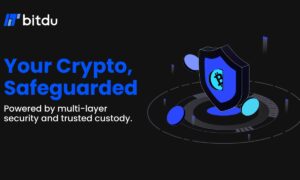System administrators operating in enterprise environments are well aware that patching constitutes a nearly full-time responsibility. Contemplate the intricacies of patching a single system: a sysadmin must identify the availability of a patch, strategize for potential downtime or disruptions, download the patch, implement the patch on the system, and verify its restoration to the previous state. In the enterprise setting, where hundreds of servers need attention at once, patching can become a highly dreaded all-day task. Additionally, there’s a notable risk of unsuccessful reboots following patch installations.
However, there are some myths and misconceptions about Linux kernel patching that often discourages users from carrying out this crucial task. With a new year ahead of us and the threat environment rising, we decided to break down some of the most common myths to shed light on the importance of kernel patching.
But first, what is a kernel? The kernel is the very heart and soul of the Linux operating system that powers a majority of computing devices around the globe. As the main interface between a computer’s physical hardware and the processes running on it, the kernel enables multiple applications to share resources by managing available resources like memory, CPU and networking to provide the necessary performance to the running workloads. Perhaps one of the most important roles of Linux kernel developers is the patching of security vulnerabilities.
Kernel Patching Can Be Time Consuming
Kernel patching is not a process that is only intended for advanced users and sysadmins. In fact, users that hold different levels of skills can still easily understand the patching process that is as simple as updating any other software. However, the patching process itself often gets labeled as a time-consuming and labor-intensive process. This then leads to vulnerability patching getting put on the back burner and delayed by weeks or even months due to the tedious requirements on overwhelmed IT teams. The threats of interruption to business operations also forces necessary patches to get delayed until a more convenient window of time is found.
When applying necessary patches becomes an afterthought, cybercriminals are then given an all-access pass to exploit businesses and repeat ransomware attacks. But by switching kernel patching to an automated process, risk can be greatly reduced, labor eliminated and the security process itself can transform.
This leads to the third and final myth surrounding Linux kernel patching that suggests it requires a complete system reboot. Again, this is far from the truth. In fact, it will no longer be necessary to block out scheduled maintenance windows for systems to be rebooted and serviced. As soon as a critical vulnerability is recognized, a patch can be automatically applied without disruptions to day-to-day business operations. By limiting the high-risk window of threats, organizations can greatly reduce their chances of falling victim to a data breach, ransomware attack, or both.
Labor cost savings can also be substantial. Security teams that were once drained of their valuable time and required to plan and executive long maintenance windows can now reallocate their resources to tasks that are more strategic to the business. Ensuring continuous operations through automated patch management can further secure business in their compliance requirements and vulnerability monitoring.
As businesses prepare for the rest of 2024, ensuring a secure and resilient computing environment for their organization is a crucial step that they cannot afford to overlook. Debunking these myths surrounding Linux kernel patching is a proactive step toward building a robust cybersecurity foundation. By embracing automated patch management and understanding the essential role of kernel updates, organizations can safeguard their systems, private data and overall business operations with confidence.
Joao Correia serves as Technical Evangelist at TuxCare (www.tuxcare.com), a global innovator in enterprise-grade cybersecurity for Linux.

































